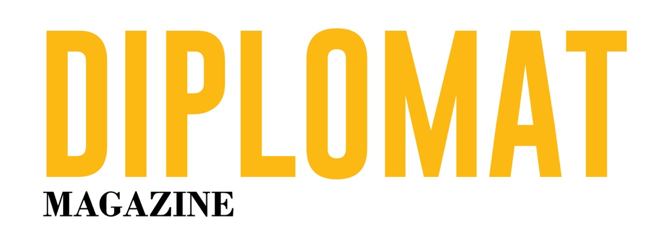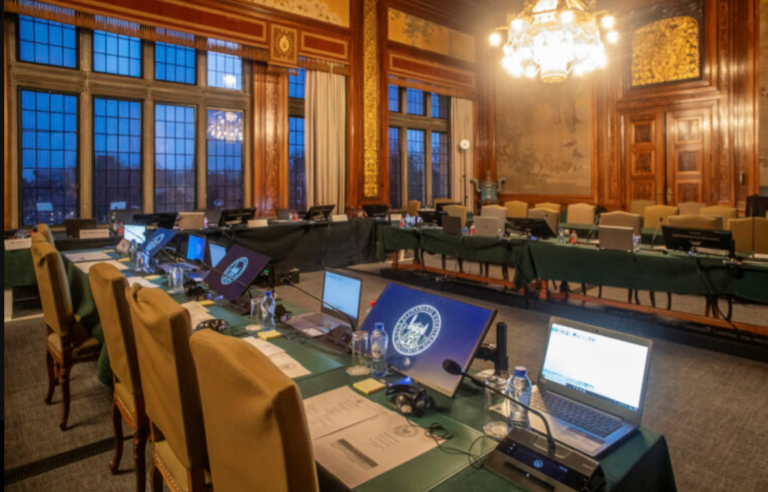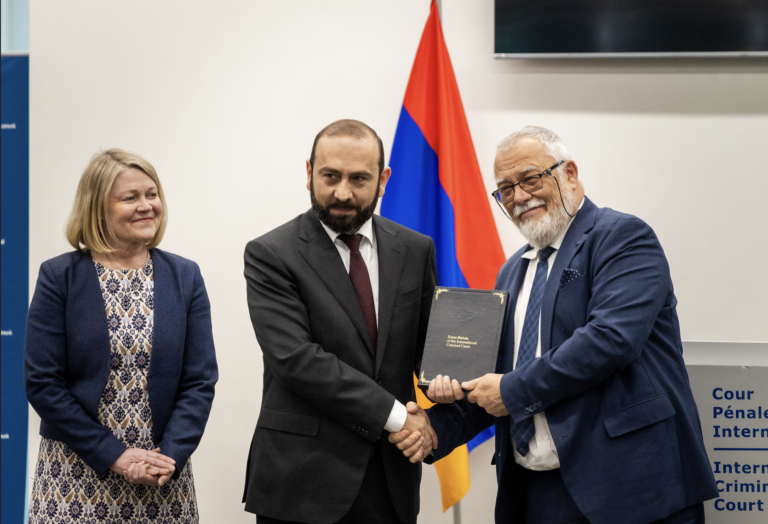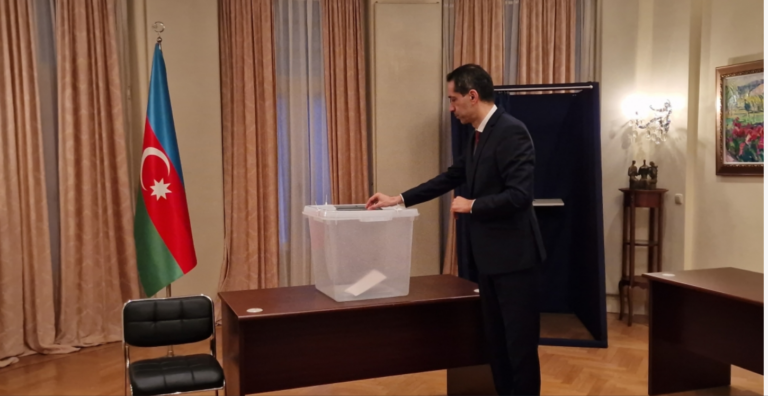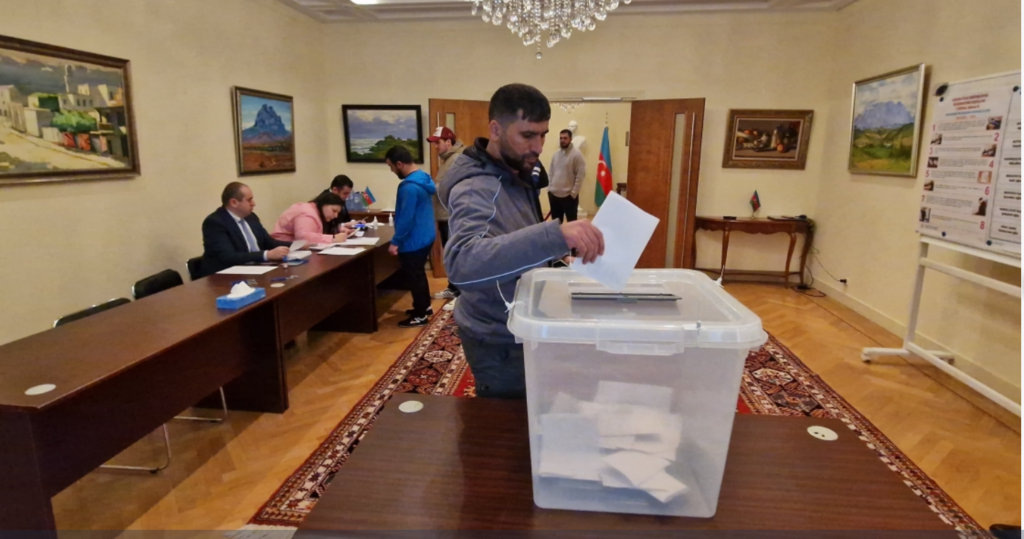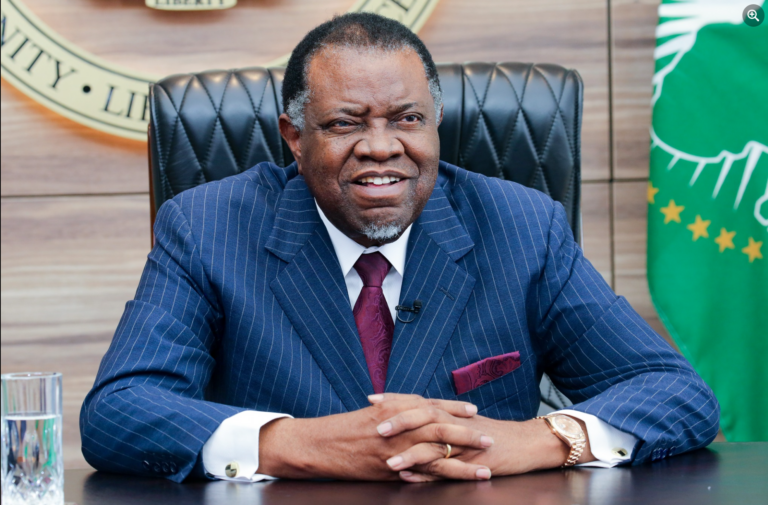The Hague, 5 February 2024 – The first procedural meeting between the Republic of Azerbaijan and the Republic of Armenia, convened under the auspices of the Energy Charter Treaty, was held on 5 February 2024 at the Peace Palace in The Hague, the headquarters of the Permanent Court of Arbitration (PCA). This meeting marked a significant step in the ongoing arbitration process, with both parties engaging in discussions concerning the procedural framework for the arbitration.
Chaired by Ms. Jean E. Kalicki, a national of the United States of America, the three-member Arbitral Tribunal presided over the meeting. The delegation representing the Republic of Azerbaijan was led by H.E. Mr. Elnur Mammadov, Deputy Minister of Foreign Affairs and Ambassador Extraordinary and Plenipotentiary, while the Republic of Armenia was represented by H.E. Dr. Yeghishe Kirakosyan, Representative of the Republic of Armenia on International Legal Matters.
The arbitration proceedings were initiated on 27 February 2023 when the Republic of Azerbaijan served a Notice of Arbitration on the Republic of Armenia in accordance with Article 27 of the Energy Charter Treaty and the Arbitration Rules of the United Nations Commission on International Trade Law, 1976.
The Arbitral Tribunal, comprised of experts from diverse national backgrounds, aims to facilitate a fair and impartial resolution of the dispute. Alongside Ms. Kalicki, Professor Donald M. McRae from Canada and New Zealand, appointed by Azerbaijan, and Professor Brigitte Stern from France, appointed by Armenia, form the Tribunal.
For those seeking further information on the proceedings, the Permanent Court of Arbitration (PCA) serves as the Registry for the arbitration and provides updates on its website (https://pcacpa.org/en/cases/312/).

Established by the 1899 Hague Convention on the Pacific Settlement of International Disputes, the PCA is an independent intergovernmental organization with 122 Contracting Parties. Headquartered at the Peace Palace in The Hague, the Netherlands, the PCA facilitates various forms of dispute resolution, including arbitration, conciliation, and fact-finding, involving States, intergovernmental organizations, and private parties.
Presently, the PCA administers a diverse portfolio of cases, including inter-State arbitrations, investor-State arbitrations, and disputes arising from contracts involving States or public entities. More information about the PCA and its work can be accessed at www.pca-cpa.org.
As the arbitration proceedings unfold, the international community will closely monitor developments and await the Tribunal’s decision, which holds significant implications for the parties involved and broader regional dynamics.
